Graham Reid | | 7 min read
Peter Gabriel: Only Us
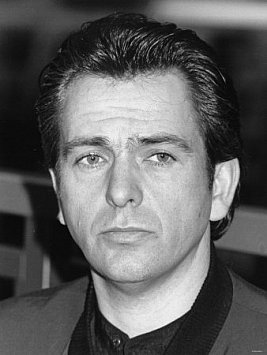
By the mid Eighties when his years in Genesis should have been well behind him and his solo career was four albums down, Peter Gabriel was rather more battered than he had a right to expect.
He's done good work -- some of it more worthy than wonderful -- but for his self-titled album of '82 (aka Security), he had been labelled by the NME reviewer as an "art-house bore". And certainly his conversations with the music press had taken a dark, intellectual tone and his passion for world music had lead to him establishing Womad in a climate much less sympathetic than it is today.
But the spectacular financial failure of a Womad festival had meant that debts spiralled upwards and he had no way to pay them. Then Genesis stepped up and offered him a chance. They would put on a re-formed show as a fundraiser.
It worked, but Gabriel had ambivalent feelings about it. "I think I will enjoy it, " he said before the show, "but having tried for seven years to get away from the image of being ex-Genesis there's obviously a certain amount of stepping back."
By the mid Eighties then he'd been through the wringer (his marriage was also crumbling and he'd been exploring various therapies) so what better way to cheer yourself up -- if you are Peter Gabriel -- than to write the soundtrack to Alan Parker's film Birdy, a movie about a young Vietnam veteran in a mental hospital whose obsession with birds leads him ever more inward.
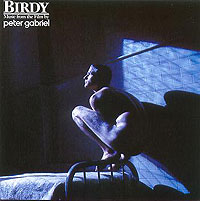 Not exactly a bundle of laughs but Gabriel's moody, fractured music captured much of the sadness, edge-of-precipice emotions and wistful melancholy of a friend of the main character as he reaches out.
Not exactly a bundle of laughs but Gabriel's moody, fractured music captured much of the sadness, edge-of-precipice emotions and wistful melancholy of a friend of the main character as he reaches out.
In a few pieces Gabriel drew on his own previously recorded material (Parker had originally suggested they all be already recorded pieces from his back-catalogue) and he faithfully acknowledges those.
But the Birdy album is exactly what it says on the box, music for a film . . . and while some of it stands on its own merits, the pieces are largely in the service of the story and images.
But it was Gabriel back at work and while a stop-gap in his more traditional career, some of the pieces (The Heat which lifts from Rhythm of the Heat of his fourth album, Sketch Pad with Trumpet and Voice which is an impressionistic piece with trumpeter Jon Hassell) are fascinating and stand-alone in their own right.
But it was his next album So, the first to be given a title, which was the turning point: it sprung the blockbuster faux-soul hit Sledgehammer (frontloaded into the public consciousness by the more innovative video) and, at the other end of the spectrum, his exceptional duet with Kate Bush on Don't Give Up.
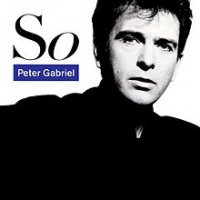
But mostly it was Gabriel's show as he played keyboards, synths, percussion and sang backing vocals. If his solo albums had peaked with his third and he'd lost listeners through the time it took between albums, So was the one which pulled him back into the centre of the discussion.
The music was typically edgy and took risks, but this time out he seemed more aware of the possibilities of pop structures. And even though the opener Red Rain was based on a troubling, recurring dream -- he'd been in dream therapy -- it springs to life with a memorable chorus.
With its relience on synths (it was very Eighties in that regard) the album does sound a little of its period, but it's hard to dislike the simplicity (and mock blues lyrics) of Sledgehammer, turn away from the emotionally direct Don't Give Up or be unmoved by Mercy Street inspired by reading the tragic story of poet Anne Sexton.
And in Big Time he mined a similar vein as Talking Heads in brittle white-funk.
So was the album which took Gabriel back into the wider public conscience -- not so much the art boffin as the guy in the weird videos -- and it won him considerable acclaim, and sales returns.
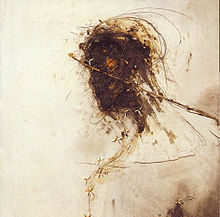 Typically however he didn't immediately capitalise on it and it would be another three years before another Gabriel album . . . and of course it was different again.
Typically however he didn't immediately capitalise on it and it would be another three years before another Gabriel album . . . and of course it was different again.
Passion in '89 began life as the soundtrack to Martin Scorsese's The Last Temptation of Christ for which Gabriel recorded -- and recorded with -- musicians from Pakistan, India, Turkey, Egypt and as far afield as Senegal and New Guinea (oddly enough none from Israel/Palestine where the story is set).
But because many of the pieces are based on traditional melodies the album has a sense of coherence which Birdy doesn't.
It is also an excellent introduction to the exotic sounds of world music, which at the time still hadn't penerated much beyond Womads. Among the distinctive voices on the album were Youssou N'Dour, Baba Maal and Nusrat Fateh Ali Khan who were alongside violinist Shankar, African percussion groups, ambient sounds, Hossam Ramzy and jazz drummer Billy Cobham.
Passion was an album of which Gabriel was justifiably proud -- the actual soundtrack had just been the starting point, the album is a separate entity -- and admirably he later released through his Real World label the album Passion-Sources which had the original material by the world music artists. Again, you couldn't fault his integrity or dedication to world music artists who were by now well established in his Real World studios in Bath.
As if to remind people of his former career however the following year he released a compilation Shaking the Tree (typically wilful, it juggled chronology) and it wouldn't be until '92 -- six years after his commercial rebirth with So -- that he would release another album of more mainstream music.
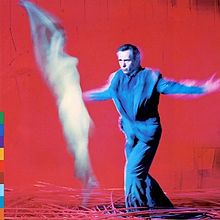 Us however was no stroll in the park: he examined his first marriage and his relationship with actress Rosanna Arquette which was slowly collapsing.
Us however was no stroll in the park: he examined his first marriage and his relationship with actress Rosanna Arquette which was slowly collapsing.
He brought a real edge of desperation to songs like Talk To Me and Love To Be Loved, but for many these sounded more like therapy courageously put in the public domain than songs you could dance to (they sure ain't Sledgehammer) or enjoy.
And as album openers at seven and five minutes respectively, he was demanding a lot of his audience.
From the videos and album art --as well as the use of innovative technology and world music elements -- Us had the feel of a multi-media art project, but when it connects it goes straight to the heart.
Blood of Eden may open with "I caught sight of my reflection . . . . I saw the darkness in my heart . . . and the darkness still has work to do" but, with Sinead O'Connor's backing vocals, it is quietly gripping.
If Steam tried to replicate the upbeat funk of Sledgehammer it worked well enough and with yet another innovative video (which won a Grammy) it was nudged into the charts and Gabriel was re-engaged with a wider audience. The most interesting tracks on the album however are Only Us which is quieter and more reserved than the naked emotionalism elsewhere, and the equally restrained Washing of the Water with a beautiful melody which sounds largely under-explored. It cries out for a cover.
With Steam and Digging in the Dirt taking him back to popular attention, Gabriel had once again come back from a (rewarding for him) wasteland beyond the mainstream. Typically however his subsequent albums were a compilation (not his idea), a double live (which came with a concert film) then two soundtracks, the first Ovo for a Millennium Dome show (worthy, dull) and Long Walk Home (music from Rabbit Proof Fence).
It was to be a full decade on from Us that Gabriel would release what many would say was a "proper" album.
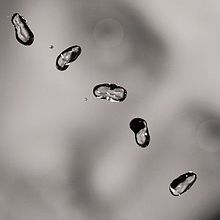 Up remains one of Gabriel's most interesting and challenging albums, as only an album about dealing with death can be. Again, Gabriel proved he wasn't one to pander to popular taste -- but songs like the theatrical opener Darkness plumb depths that only the likes of Scott Walker (or Trent Reznor, who did some remixes) would get into it.
Up remains one of Gabriel's most interesting and challenging albums, as only an album about dealing with death can be. Again, Gabriel proved he wasn't one to pander to popular taste -- but songs like the theatrical opener Darkness plumb depths that only the likes of Scott Walker (or Trent Reznor, who did some remixes) would get into it.
The single is truly horrible and misplaced (The Barry Williams Show, a weak poke at talkshows) and there are rather too many sonic scribbles and stutters for the album to ever be warmly embraced.
By this time in his career Gabriel was "fans-only" zone for most and those few diligent Gabriel scholars would doubtless argue that this is one of his most difficult but rewarding albums. But they are arguing in a vacuum for the most part and it is an album which went much unloved, although it managed to briefly enter the UK and US charts. Fans having waited a decade must have rushed the stores. Most people sat it out and let songs like the subtle and eerily beautiful I Grieve (an equal to any Springsteen meditation on death) go past them.
And that was it on the recording front for Gabriel -- aside from yet another compilation, and his part in the inferior studio left-overs collection Big Blue Ball -- for another eight years until Scratch My Back which found him taking another left turn, this time covering songs by Radiohead, Bowie, Paul Simon and others. (It is reviewed here).
The intended pay-off would be artists covering his songs on an album I'll Scratch Yours, but that hasn't been forthcoming so Gabriel shoved himself even further off the radar of the mainstream with New Blood in 2011, an album of orchestrations of some of his songs. It is reviewed here.
So Peter Gabriel is still out there, singing to a diminishing audience and being more selective about his audience, as they say in Spinal Tap.
Unlike his peers, Gabriel has often wilfully gone his own way knowing there are fewer commercial rewards and less public acclaim. All this would be fine if the music had sometimes been a bit better than it has been.
He's not quite the art-house bore he was once called, and if some of his best work -- like Up -- has gone past people, he hardly seems to be concerned. He remains respected if not as loved as he once was. Admired but not embraced.
But you wouldn't be holding your breath for another Gabriel album any time soon. And most people, even those who faithfully followed him through those increasingly interesting first four solo albums, probably aren't.
For a consideration of Peter Gabriel's first four solo albums go here.

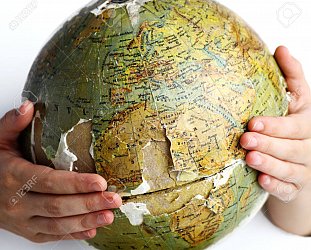
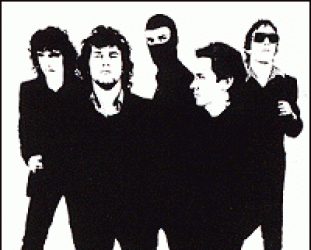
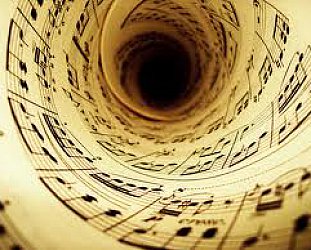

post a comment